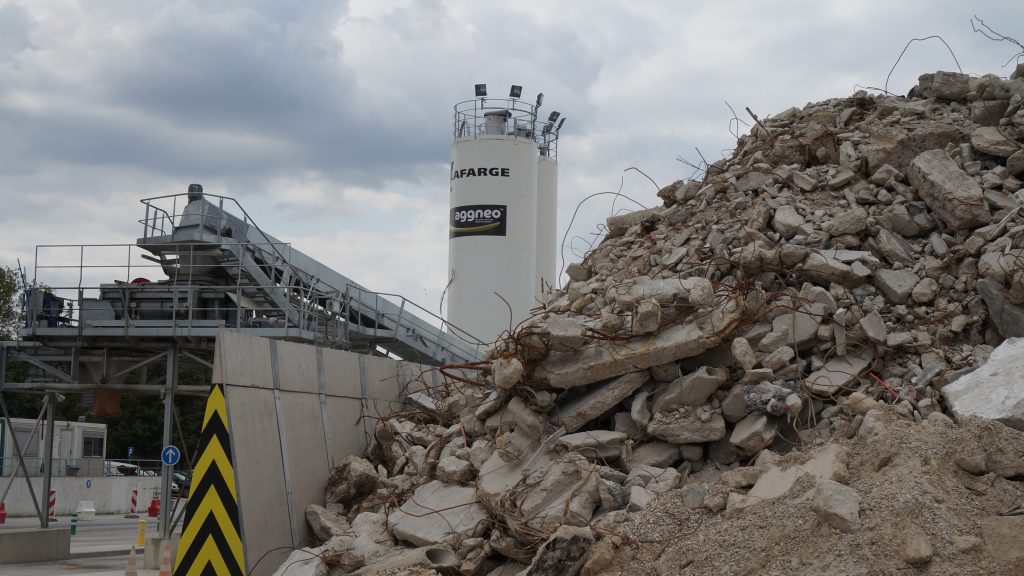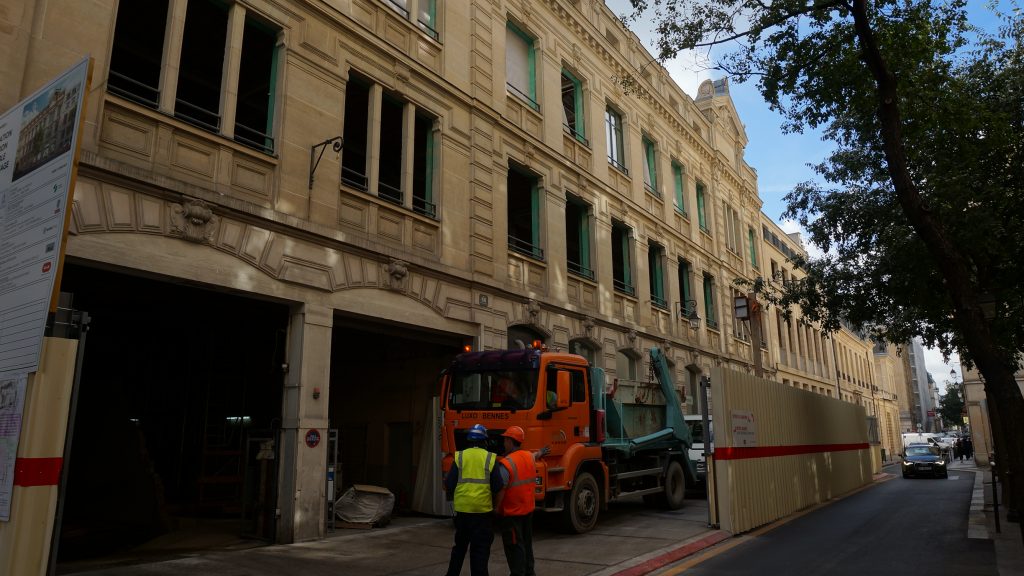Description
In the framework of European targets for recycling of Construction and Demolition Waste (70% by 2020), preservation of natural resources, increasing of sustainability weight in construction projects and urbanisation development, LafargeHolcim is committed to support its clients in their circular economy projects.
With its partner Bouygues Construction, LafargeHolcim took part of an original urban circular economy pilot in a French building site. This project had two main challenges. Located in the heart of the old Paris in the Marais area, the two buildings that benefited from a complete renovation (21 000m²) are recognised as heritage buildings. Furthermore, the renovation was led under high building standards (HQE – High Environmental Quality).
Through its aggneo® offer, LafargeHolcim proposed to its partner a full circular economy and innovative solution:
- By taking back, sorting and recycling 4,000 tonnes of demolition waste through a mutualisation offer which consists in completing the deposit with demolition waste from other construction sites.
- And by producing recycled aggregates from those demolition waste in a dedicated and local platform, including 720 tonnes to make new concrete for the renovation project in a local concrete plant.
Quality of demolition waste of a construction site is hard to predict. LafargeHolcim proposed to complete 500 tonnes-deposit by demolition waste from other construction sites (3,500 tonnes), in order to propose high quality recycled concrete to our partner and to offer a mutualisation service.
Thanks to a very sharp separation process and an optimal logistic, 720 tonnes of recycled aggregates have been used to produce new concrete for the project and 3,280 tonnes of recycled gravels have been produced for road applications.
Added value
This C&DW recycling approach and the mutualisation service between construction sites contribute to a more circular economy by recycling demolition waste into brand new construction products, and ensure:
- An optimal use of waste as all of inert material have been recycled into new aggregates: 18% of them to produce new concrete products and 82% to produce road gravels. The mutualisation service between several construction sites allows to get more C&DW volumes and to propose recycling solutions which are alternatives to recovery solutions (restoration of site) or landfilling.
- A contribution to prevent using 4,000 tonnes of natural resources from quarries.
- A contribution to reduction of greenhouse gas emissions: the carbon assessment of a traditional construction project (with extraction of natural resources, river logistic as the volumes are higher and production of concrete) is around 6.2 kg of CO2/tonne of aggregate versus 5.2 kg of CO2/tonne for this circular economy project (recuperation of waste material, road logistic as the volumes are smaller and production of recycled concrete).
- Finally, 8% of avoided CO2 per tonne of recycled aggregate have been achieved. Regarding recycled concrete, the carbon balance is similar to natural aggregate-based concrete.
- By 2020, LafargeHolcim Group wants to re-use 80 million metric tonnes of waste derived resource per year.
Challenges
Finding solutions to increase the recycling of CD&W – one the heaviest and most voluminous waste streams with numerous different materials – is a priority across Europe.
Despite its potential, recycled concrete suffers from several obstacles:
- A psychological obstacle in using recycled aggregate for new concrete. Norms that could help in altering construction behaviours by increasing the rate of recycled aggregates in concrete formulae are more or less limited across EU countries.
- A very pragmatic issue with the transformation of concrete plants by allocating more spaces to storage in order to better manage natural and recycled aggregates – it involves space and financial issues.
- The price of such circular economy projects is currently higher than a traditional project because of the sorting process in the construction site, the adaptation of the concrete plant and the small volumes involved.
Partners
Bouygues Construction

